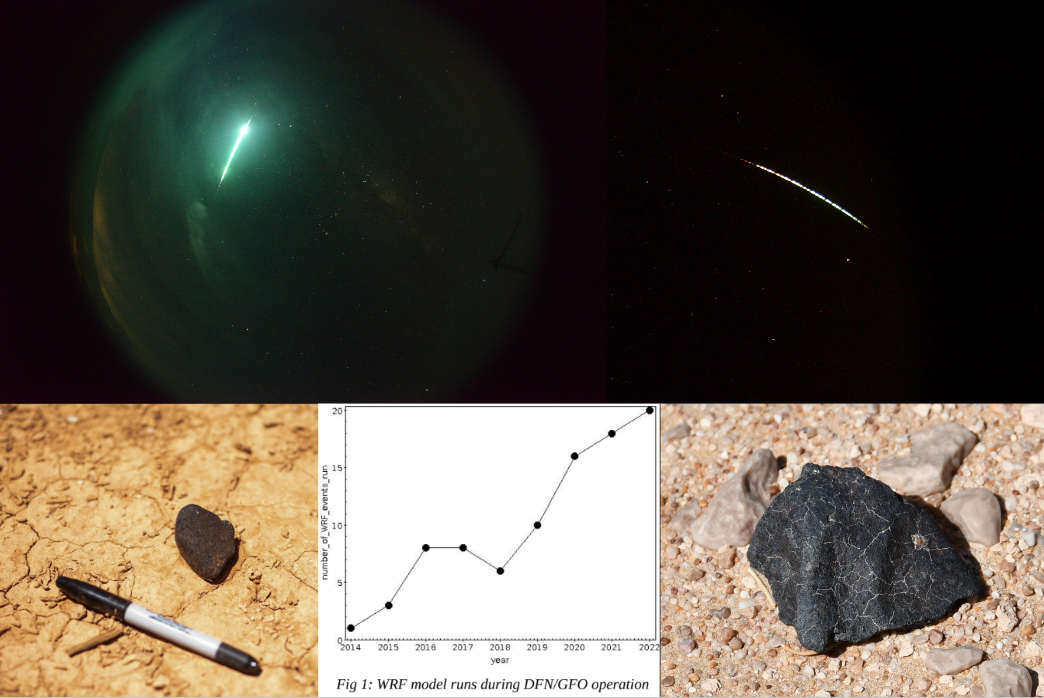The Desert Fireball Network (DFN) team based at SSTC, Curtin university, operates and coordinates a number of Fireball camera networks within the Global fireball observatory (GFO). The goal of this observation is to capture interaction of space rocks with the Earth’s atmosphere – the fireball – as optical data, analyse the data and recover dropped meteorites. Meteorite positions are eventually affected by the winds and air pressure throughout the atmosphere. Weather Research and Forecasting model (WRF-ARW) developed by National Centre for Atmospheric Research (NCAR) is used to simulate the weather conditions.
Of the 66+ meteorite droppers observed over Australia, 9 meteorites have been recovered, with a further 4 found overseas in the frame of the GFO. With increased numbers of falls being observed around the world, the assistance of the DFN team in this area has become significant workload, as the WRF was run semi-automatically.
This ADACS project delivered an automated workflow for the weather modelling using Nextflow. This has both saved time of experts to run the WRF modelling and also allowed other team members to run the modelling. On top of that, the results of this ADACS project enabled batch processing of multiple weather modelling cases in parallel, opening possibilities to analyse meteorite fall data from other sources like weather radars and satellite imagery.

